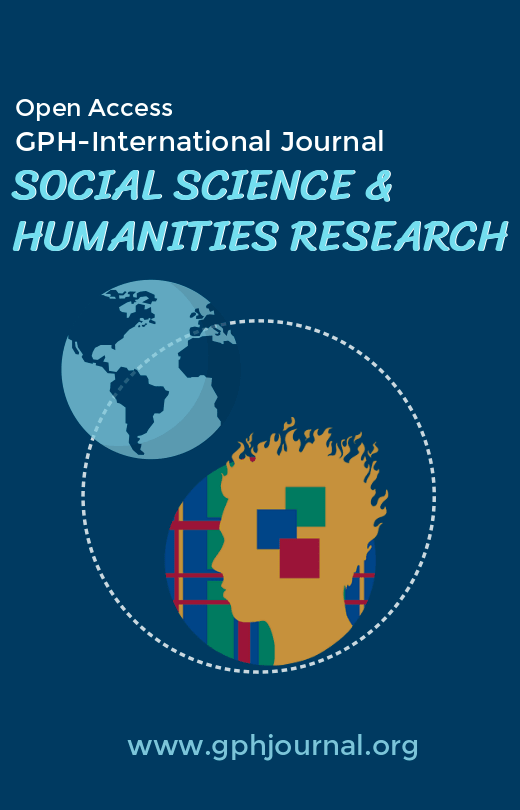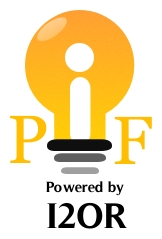IMAGE MANAGEMENT AND PUBLIC ACCEPTANCE OF POLITICAL PARTIES IN RIVERS STATE
Abstract
This paper investigates the relationship between image management and public acceptance of political parties in Rivers State. The aim was to examine the relationship between image management and public acceptance of political parties in Rivers State using organizational reputation and brand competence as dimensions. The study adopted cross-sectional research design. 332 copies of questionnaire distributed. The Multiple Regression Analysis Statistical tool was used with the aid of Statistical Package for Social Sciences (SPSS version 23.0), discriminant validity (AVE) and Cronbach Alpha verified the internal consistency and validity status and the results were positive. The findings of the study showed that image management significantly related with public acceptance of political parties, thus enhancing trustworthiness and advocacy. Based on the findings, the study, recommends that, Political Parties should focus on other methods such as image management, communication, and marketing mix in order to increase political brand awareness and image among potential voters. Political parties’ leaders need to understand Rivers State’s voters’ perception and ideology for maximum acceptance. Thus, parties’ leaders should keep conducting regular surveys to understand public needs and expectations of political parties.
Downloads
References
Aaker, J. (1999). The malleable self: The role of self-expression in persuasion. Journal of Marketing Research, 36, 45-57.
Aaker, J.L. (1997). Dimensions of brand personality, Journal of Marketing Research,34(3), 347-356.
Abd-El-Salam M.E., Shawky Y.A. & El-Nahas.T. (2013). The impact of corporate image and reputation on service quality, customer satisfaction and customer loyalty: testing the mediating role. Case analysis in an international service company. The Business & Management Review, 3(2)
Alsamydai, M. (2004). Political marketing, principles and strategies: Dar Zehran for Publishing and distribution.
Alvesson, M. (1990). On the popularity of organizational culture. Acta Sociologica, 33(1), 31-49.
Ayass, T. (2008). Investigation of the antecedents of an e-commerce models, Dissertation Presented In Partial Fulfillment of the Requirements for the Degree of Doctoral of Business Administration, University of Phoenic.
Baek, T. H., & King, K. W. (2011). Exploring the consequences of brand credibility in services. Journal of Services Marketing,25(4), 260-272.
Balmer, J.M.T & Greyser, S.A (2003). Revealing the corporation: Perspectives on identity, image, reputation, corporate branding and corporate-level marketing, Routledge
Boulding, K. E. (1973). The image: Knowledge in life and society. University of Michigan Press.
Cervera, A., Schlesinger, W., Mesta, M. Á., & Sánchez, R. (2012). Medición de la imagen de la universidad y sus efectos sobre la identificación y lealtad del egresado: una aproximación desde el modelo de Beerli y Díaz (2003). Rev. Españ. Investig. Mark. ESIC 16, 7–29.
Chandra, T., Hafni, L., Chandra, S., Purwati, A. A. & Chandra, J. (2019). The influence of service quality, university image on student satisfaction and student loyalty. Benchmark. Int. J. 26, 1533–1549.
Cheung, C.M. & Thadani, D. R. (2012). The impact of electronic word-of-mouth communication: A literature analysis and integrative model, Decision Support Systems, 54(1), 461–470.
Chung, K-C. & D. K. Holdsworth. (2009). Investigating the factors affecting the market acceptance of online tertiary education in Singapore. Journal of Internet Business, 6, 111-127.
Chen, Y.H. & Barnes, S. (2007): "Initial trust and online buyer behaviour", Industrial Management and Data Systems, 107(1), 21-36.
Cornelissen, J. P., Haslam, S. A., & Balmer, J. M. (2007). Social identity, organizational identity and corporate identity: Towards an integrated understanding of processes, patternings and products. British Journal of Management, 18(s1).
Cretu, A. E., & Brodie, R.J. (2007). The influence of brand image and company reputation where manufacturers market to small firms: A customer value perspective. Industrial Marketing Management, 36(2), 230-240.
Dick, A. & K.P. Basu., (1994). Customer loyalty: Toward an integrated conceptual framework. Journal of the Academy of Marketing Science, 22(2), 99-113.
Eastlick, M. & R. Feinberg (1999). Shopping motives for mail catalog shopping, Journal Business Research, 45, 281–290.
Elsbach, K. D. (2003). Organizational perception management. Research in Organizational Behaviour, 25, 297-332.
Fan, Y. W. & Miao, Y. F. (2012). Effect of electronic word-of-mouth on consumer purchase intention: The perspective of gender differences, International Journal of Electronic Business Management, 10(3), 175.
Fariaa, N. & Mendes, L. (2013). Organizational image’s partial mediation role between quality and users’ satisfaction. The Service Industries Journal, 33(13–14), 1275–1293.
Fombrun, C. (1996). Reputation: Realizing value from the corporate image. Harvard Business School Press. 68
Fombrun, C. J., Gardberg, N. A., & Sever, J. M. (2000). The reputation quotient: a multi-stakeholder measure of corporate reputation. Journal of Brand Management, 7(4), 241-255.
Fombrun, C., & Shanley, M. (1990). What’s in a name? Reputation building and corporate strategy. Academy of Management Journal, 33(2), 233-258.
Foxall, (2003). The behavior analysis of consumer choice: An introduction to the special issue. Journal of Economic Psychology, 24, 581- 588.
Getu, M. (2020). The effects of brand image on community brand perception: Steely r. M. I. Pvt. Ltd. Company.A Thesis Submitted to St.Mary’s Universiy College, School ofGraduate Studies in Partial Fulfiiment of the Requirementfor the Degree of Master of Marketing Management. St.Mary’s University
Gilpin, D. (2010). Organizational image construction in a fragmented online media environment. Journal of Public Relations Research, 22(3), 265–287.
Glory, B., & Agnes, B. (2016). Repositioning in Nigeria: Application of marketing communication tools by political parties in campaign programmes. International Journal of Management Sciences and Business Administration, 2(9), 20-28.
Gray, E., & Marizka, D. (2014). Customer loyalty - What is it? How can you measure and manage it? - Loyalty research center. Loyalty Research Center,
Gregory, A. (2006). A development framework for government communicators. Journal of Communication Management, 10(2), 197-210
Hafeez, K. & Essmail, E. A. (2007). Evaluating organisation core competences and associated personal competencies using analytical hierarchy process. Management Research News, 30(8), 530-547.
Hair, J. F., Black, W. C., Babin, B. J. & Erson, R. E. (2010). Multivariate data analysis. a global perspective (7th edition). Person Prentice.
Grabe, E. M. & Bucy, P. E. (2009). Image bite politics: news and the visual framing of elections; Oxford University Press
Hasan, A. & Muhammad, A. K. (2010). Consumer’s trust in the brand: can it be built through brand reputation, brand competence and brand predictability?. International business research, 13(1), 43-51.
Hassan, S. & Shamsudin, M. F. M. F. (2019). Measuring the effect of service quality and corporate image on student satisfaction and loyalty in higher learning institutes of technical and vocational education and training. Int. J. Eng. Adv. Technol. 8, 533–538.
Hatch, M. J. & Schultz, M. (1997). Relations between organizational culture, identity and image. European Journal of Marketing, 31(5), 356-365.
Hatch, M.J. & Schultz, M. (2004). Organizational identity: A reader, Oxford University Press
Hong, J. W. & Zinkhan, G. M. (1995). Self concept and advertising effectiveness: the influence of congruence, conspicuousness, and response mode, Psychology and Marketing, 12(1), 53-77
Humphreys, M., & Brown, A. D. (2002). Narratives of organizational identity and identification: A case study of hegemony and resistance. Organization Studies,23(3), 421–447.
Hussain, M. M., Mawdudur, R. & Muhammed, N. A. (2006). Core competencies in small manufacturing firms. Journal of Accounting - Business & Management, 13, 114-122.
Illia, L. & Greyser, S. A. (2013). Corporate communication and the corporate persona. In M. T. Balmer, L. Illia, & A. Gonzalez del Valle Brena (Eds.), Contemporaryperspectives on corporate marketing: Contemplating corporate branding,marketing and communications in the 21st century (21-42). Routledge.
Illia, L. & Lurati, F. (2006). Stakeholder perspectives on organizational identity: Searching for a relationship approach. Corporate Reputation Review, 8(4), 293-304.
Krejcie, R.V. & Morgan, D.W., (1970). Determining sample size for research activities. Educational and Psychological Measurement.
Kumar, V., Sharma, A., Shah, R. & Rajan, B. (2013). Establishing profitable customer loyalty for multinational companies in the emerging economies: a conceptual framework. Journal of International Marketing,21(1), 57-80.
Ladhari, R., Ladhari, I., & Morales, M. (2011). Bank service quality; Comparing Canadian and Tunisian customer perception. International Journal of Bank Marketing, 29(3), 224-246.
Ladipo, P. K. A. &Rahim, A. G. (2013).Corporate Reputation as a Strategic Asset, International Journal of Business and Social Science, 4(2);220-225
Lilleker, G. D. (2006). Key concepts in political communication; Sage Publications.
Liu, D., Li, C., & Che, M. (2006). Study on enterprise's core competence. The Journal of American Science, 2(1), 71-74.
Manin, B. (1997). The principles of representative government; Chicago University Press
Moorman, C., Deshpande, R., & Zaltman, G. (1994). Factors affecting trust in market research relationships, Journal of Marketing,57(1), 81-101.
Percy, M. F., Rolando, A. B. & Isabelle, V. B. (2013). A new approach for measuring corporate reputation, RAE, São Paulo, 54(1), 53-66
Perez, J.P. & Torres, E.M. (2017). Evaluation of the orga¬nizational image of a university in a higher education institution, Contaduria Administration Journal, 62, 123-140.
Petasis, A. & Opoku-Mensah, F. (2009). Comparative analysis of marketing strategies used in the banking sector between Europe and Africa, The case of Ghana and Cyprus. The Cyprus journal of sciences,7, 139.
Phau, I. & Lau, K. C. (2000). Conceptualizing brand personality: a review and research propositions, Journal of Targeting, Measurement and Analysis for Marketing, 9(1), 52-69.
Pornsiri, W. (2016). Brand competency and brand performance: An empirical research of cosmetic businesses and health products business in Thailand, The Business and Management Review, 7(5), 1-10
Seeger, M. W., Sellnow, T. L., & Ulmer, R. R. (1998). Communication, organization, and crisis. In M. E. Roloff & G. D. Paulson, (Eds.), Communication yearbook 21, (231- 275). Routledge.
Sirgy, M. J. (1982). Self-concept in consumer behavior: A critical review. Journal of consumer research,9(3), 287-300.
Stapelberg, R. F. (2009). Handbook of reliability, availability, maintainability and safety in engineering design. Springer-Verlag.
Stormback, J. & Kiousis, S. (2011). Political public relations: Principles and applications. Routledge
Trent, S. J., Friedenberg, V. R. & Denton, R. (2011). Political campaign communication: principles and practices; The Rowman and Littlefield Publishers Inc.
Wan, H-H. & Schell, R. (2007). Reassessing corporate image—An examination of how image bridges symbolic relationships with behavioral relationships. Journal of Public Relations Research, 19(1), 25–45
van der Merwe, A. W. A. J. & Puth, G. (2014). Towards a conceptual model of the relationship between corporate trust and corporate reputation. Corporate Reputation Review, 17(2), 138–156.
Willi, C. H., Nguyen, B., Melewar, T.C., & Dennis, C. (2014). Corporate impression formation in online communities: A qualitative study. Qualitative Market Research: An International Journal, 17(4), 410-440.
Copyright (c) 2022 Awah, Chibuike Kalu & Dr. Igwe, Peace

This work is licensed under a Creative Commons Attribution-NonCommercial-NoDerivatives 4.0 International License.
Author(s) and co-author(s) jointly and severally represent and warrant that the Article is original with the author(s) and does not infringe any copyright or violate any other right of any third parties, and that the Article has not been published elsewhere. Author(s) agree to the terms that the GPH Journal will have the full right to remove the published article on any misconduct found in the published article.





























